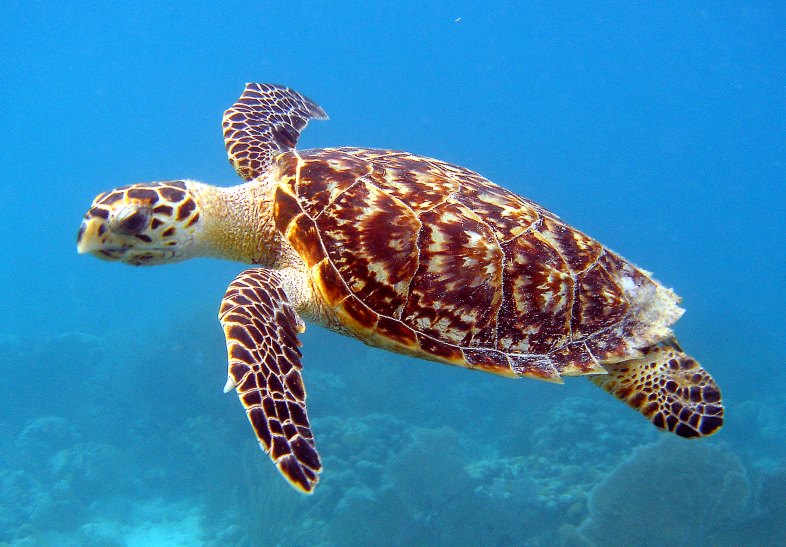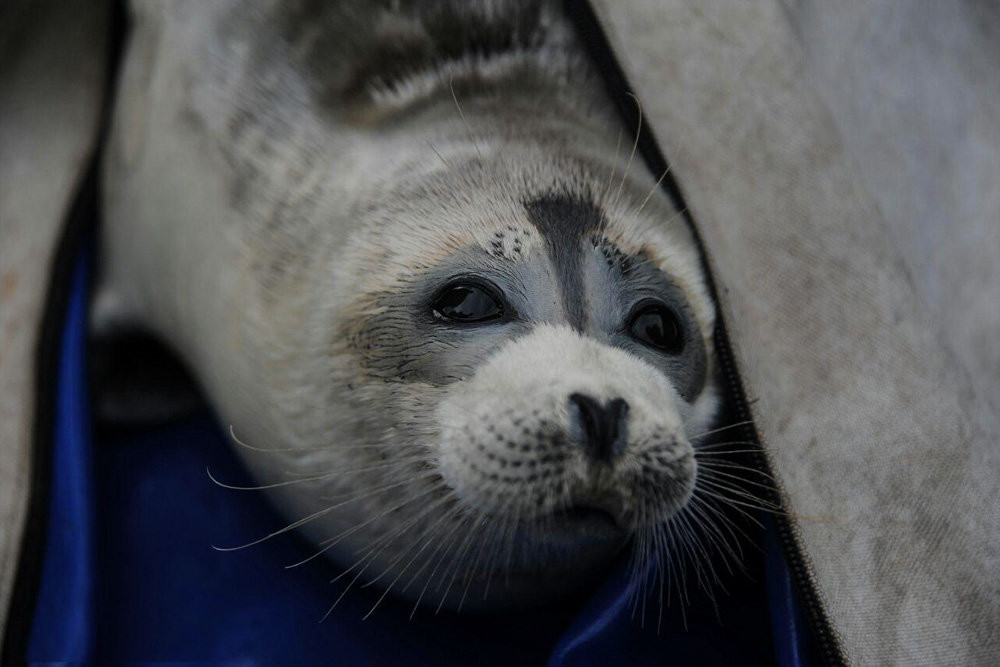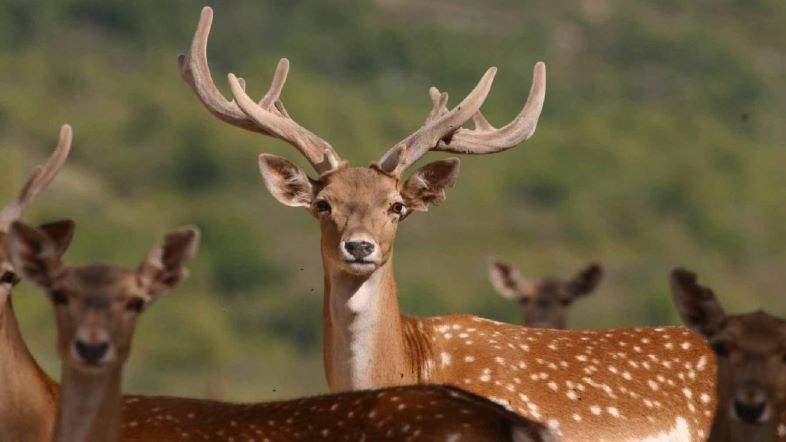Hawksbill turtle is one Of the oldest animal species still roaming the planet, the Hawksbill turtle has transcended over 200 million years to be with us today. These deep water dwellers have been known to reach a size of over 1 meter in length and weight of 60kg!
Evolution has given them mesmerizing multi-colored shells and turned their claws into big swimming fins. Although they’ve managed to survive for such an epically long time, their population has been on a steep decline since the 1800’s.
For reasons none other than habitat degradation, wildlife trade, poaching and incidental capture these magnificent creatures are fighting to stay alive. Lucky for them, their frequent visiting of the safe and peaceful coasts of Kish Island has been a big help in their survival.
Appearance
Hawksbill turtles have mottled shells consisting of an irregular combination of shades of amber, orange, red, yellow, black and brown. The shells typically have serrated edges, with overlapping scutes. Their head comes to a tapered point and their lower jaw is V-shaped, giving them a hawk-like appearance. Hawksbills grow up to 2 to 3 feet in shell length and can weigh between 100 and 150 pounds at maturity. Hatchlings are only 2 to 3 inches long and mostly brown in color. Hawksbills have four scales (two pairs) between their eyes and four scutes along the edge of each side of their carapace.
Behavior and Diet
Hawksbill turtles are omnivorous (feeding on both plants and other animals), but their preferred food in many areas is sea sponges. They will also eat marine algae, corals, mollusks, tunicates, crustaceans, sea urchins, small fish, and jellyfish. In Hawaii, they tend to be opportunistic given the limited availability of sponges. The shape of their mouth and their sharp beaks enable them to reach into small holes and crevices in the reefs to find food.
Like other sea turtle species, hawksbills can migrate long distances between foraging areas and nesting beaches. In the Atlantic, a female hawksbill that nested at Buck Island Reef National Monument in the U.S. Virgin Islands was tracked 1,160 miles to foraging habitat in the Miskito Cays in Nicaragua. Solomon Island hawksbills can travel 500 to 1000 miles (800 to 1,650 kilometers) between Arnavon nesting beaches and foraging areas off Australia. However, some hawksbill populations, such as Hawaiian hawksbills, migrate shorter distances and stay within the island chain.
Where They Live
Hawksbill turtles use a variety of habitats during different stages of their life cycle, but largely inhabit nearshore foraging grounds, especially healthy coral reef habitats. In the Eastern Pacific, large hawksbill populations have been found in mangrove estuaries. Upon leaving their nesting beaches, most hawksbill hatchlings enter pelagic (open sea) habitat, where they take shelter in floating algal mats and drift lines of flotsam and jetsam for approximately 1 to 5 years. Eventually, juveniles migrate to shallower coastal feeding grounds, including their preferred coral reef habitats, where they mature to adulthood and spend the remainder of their lives. The ledges and caves of coral reefs provide shelter for resting hawksbills during the day and at night. Hawksbills are also found around rock formations, high energy shoals (sand bars in shallow water), and estuaries that provide good habitat for sponge growth.
Hawksbills can be found living in nearshore habitats in all of the world’s major oceans. The occurrence of hawksbills across many countries makes it critical for citizens and governments to work together for the protection and recovery of the species.
Threats
Bycatch in Fishing Gear
A primary threat to sea turtles is their unintended capture in fishing gear which can result in drowning or cause injuries that lead to death or debilitation (for example, swallowing hooks or flipper entanglement). The term for this unintended capture is bycatch. Sea turtle bycatch is a worldwide problem. The primary types of gear that result in bycatch of hawksbill turtles include gillnets and hook and line fisheries operating in coastal habitats.
Direct Harvest of Turtles and Eggs
Despite their protection under various national and international frameworks, the intentional killing of hawksbills for the wildlife trade and the harvest of their eggs, meat and shells is still widespread.
Hawksbill tortoise shell is often collected and carved into hair clips, combs, jewelry, and other trinkets, while whole turtles are often harvested and stuffed, all of which can then be sold in the illegal wildlife trade. Hawksbill eggs are dug up and consumed by coastal community members, or sold for consumption in nearby urban centers. Hawksbill meat is still consumed in many countries, although it is often considered less of a delicacy than the meat of other sea turtle species. Due to the sponges hawksbills eat, their meat can become toxic, which has led to the mass poisoning, illness and death of groups of individuals.
Loss and Degradation of Nesting and Foraging Habitat
A major threat to hawksbill turtles is the loss of nesting habitat and coral reefs due to coastal development, rising seas from climate change, and pollution. Coastal development, including shoreline hardening or armoring (e.g., seawalls), can result in the complete loss of dry sand suitable for successful nesting. Rising sea levels and more intense storms are leading to the erosion of nesting beach habitat as well as nest inundation. Artificial lighting on and near nesting beaches can deter nesting females from coming ashore to nest and can disorient hatchlings trying to find the sea after emerging from their nests.
In addition, changes to coral communities as a result of land-based runoff and coral bleaching events can negatively impact habitat and prey organisms. Recent evidence shows that global climate change is damaging coral reefs by causing more cases of coral diseases, which can ultimately kill entire coral reef communities. Hawksbill turtles rely on these coral reefs for food resources and habitat.
Predation of Eggs and Hatchlings
The destruction and consumption of eggs and hatchlings by non-native and native predators (particularly feral pigs, rats, racoons, mongoose, feral cats and dogs) is a major threat to sea turtles around the world. In particular, burgeoning populations of feral and semi-domesticated dogs have accompanied the development of human coastal communities, resulting in the rampant consumption of hawksbill eggs and hatchlings around the globe.
Vessel Strikes
As with other species of sea turtles, hawksbill sea turtles are at risk of being struck by various types of watercraft when they are at or near the surface. Increases in vessel traffic associated with coastal development and recreation can threaten turtles near the surface, especially in areas near ports, waterways, and developed coastlines throughout their range.
Ocean Pollution/Marine Debris
Increasing pollution of nearshore and offshore marine habitats threatens all sea turtles and degrades their habitats. Hawksbill turtles may ingest marine debris such as fishing line, balloons, plastic bags, floating tar or oil, and other materials discarded by humans which they can mistake for food. They may also become entangled in marine debris, including lost or discarded fishing gear, and can be killed or seriously injured.
Climate Change
For all sea turtles, a warming climate is likely to result in changes in beach morphology and higher sand temperatures, which can be lethal to eggs or alter the ratio of male and female hatchlings produced. Rising seas and storm events cause beach erosion, which may flood nests or wash them away. Changes in the temperature of the marine environment are likely to alter the abundance and distribution of food resources, leading to a shift in the migratory and foraging range and nesting season of hawksbills.









No comment